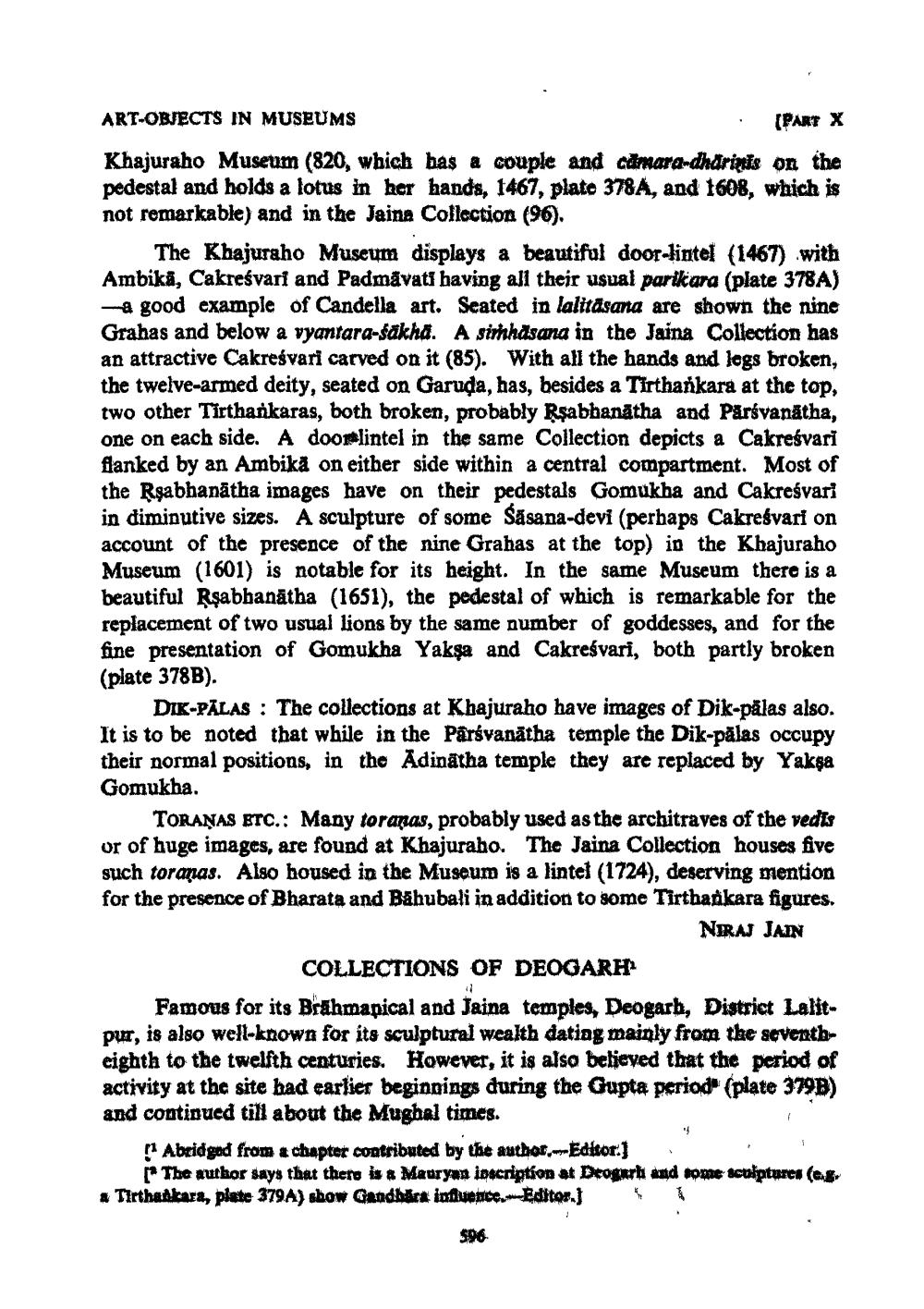________________
ART-OBJECTS IN MUSEUMS
.
(PART X
Khajuraho Museum (820, which has a couple and cdmarandharinis on the pedestal and holds a lotus in her hands, 1467, plate 378A, and 1608, which is not remarkable) and in the Jaina Collection (96).
The Khajuraho Museum displays a beautiful door-lintel (1467) with Ambika, Cakreśvari and Padmavati having all their usual parikara (plate 378A) - a good example of Candella art. Seated in lalitasana are shown the nine Grahas and below a vyantara-sakha. A simhasana in the Jaina Collection has an attractive Cakreśvari carved on it (85). With all the hands and legs broken, the twelve-armed deity, seated on Garuda, has, besides a Tirthankara at the top, two other Tirthankaras, both broken, probably Rşabbanatha and Parsvanátha, one on each side. A doorlintel in the same Collection depicts a Cakreśvari flanked by an Ambika on either side within a central compartment. Most of the Rşabhanātha images have on their pedestals Gomukha and Cakreśvari in diminutive sizes. A sculpture of some Săsana-devi (perhaps Cakreśvari on account of the presence of the nine Grahas at the top) in the Khajuraho Museum (1601) is notable for its height. In the same Museum there is a beautiful Rsabbanātha (1651), the pedestal of which is remarkable for the replacement of two usual lions by the same number of goddesses, and for the fine presentation of Gomukha Yakşa and Cakreśvari, both partly broken (plate 378B).
DIK-PALAS : The collections at Khajuraho have images of Dik-pålas also. It is to be noted that while in the Pārsvanātha temple the Dik-pālas occupy their normal positions, in the Adinātha temple they are replaced by Yaksa Gomukha.
TORAŅAS ETC.: Many toranas, probably used as the architraves of the vedis or of huge images, are found at Khajuraho. The Jaina Collection houses five such toranas. Also housed in the Museum is a lintel (1724), deserving mention for the presence of Bharata and Bahubali in addition to some Tirthaikara figures.
NRAJ JAIN COLLECTIONS OF DEOGARH Famous for its Brahmapical and Jaina temples, Deogarh, District Lalitpu, is also well-known for its sculptural wealth datiаg mainly from the seventheighth to the twelfth centuries. However, it is also believed that the period of activity at the site had earlier beginnings during the Gupta perioda (plate 3798) and continued till about the Mughal times.
Abeid ged from a chapter contributed by the author-Editor:)
The author says that there is a Mauryan inscription at Drogurt and some sculptures (eg a Tirthadkara, plate 379A) sbow Gandhara influencer Editar]
$96




